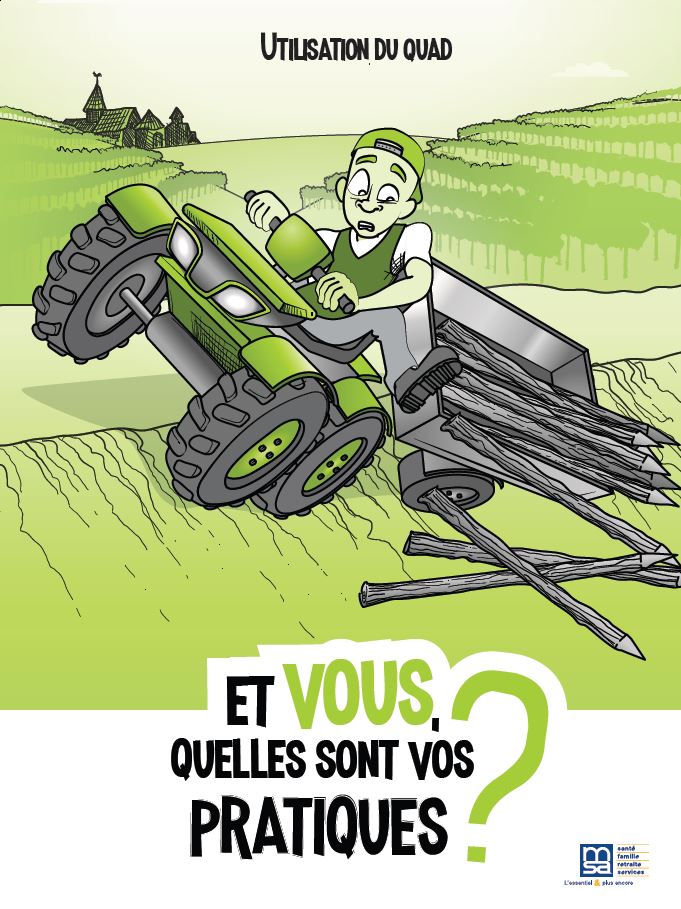Sécurité
First introduced in the 1980s, this all-terrain vehicle is widely used on farms (for travelling to remote or hard-to-reach plots, carrying equipment and materials for repairing trellises, working the soil with the quad towed behind it, etc.).
Every year, quad bikes are the source of fatal or serious accidents in agriculture.
Every year, quad bikes are the source of fatal or serious accidents in agriculture.

Dangers and risks
Among the hazards and risks associated with its use are rollover and pitching.These can be caused by :
- A high centre of gravity (tipping).
- A change in the centre of gravity (offset, mounted or hitched implement).
- A lack of differential (which compensates for the difference in speed between 2 wheels on the same axle) on certain models, making high-speed bends particularly dangerous.
- Speed and lack of control (especially on unstable terrain).
- Environment (slippery ground, natural obstacles such as low-hanging branches, wild animals, etc.), weather (rain, mud, etc.) and uneven terrain (rocks, holes, slopes, etc.).
- Overconfidence and possible negligence on the part of experienced drivers.
- Inappropriate reactions from inexperienced drivers.
Regulations and points to watch out for
There are several categories of quad bike (heavy motor quadricycle, MAGA, etc.), with specific approvals and certification, implying different rules (road traffic or not, maximum authorised speed, exemption or not from driving licence, registration or registration plate, number of seats, etc.).Manoeuvrability, stability and centre of gravity can be altered by the addition of accessories (trunks, winches, etc.) or equipment (trailer, for example).
Whether you need a driving licence or not, before using a quad bike, you must undergo compulsory training. The machine must, of course, be insured.
As a reminder, professional use by minors is prohibited.
Prevention and protection measures
The risk assessment carried out by the company will enable it to better target its purchase and define the characteristics of the machine and the safety equipment to be provided, in order to draw up its specifications:- Quad category, type-approval and homologation adapted to use, conformity.
- Load, transport and towing capacities.
- Tyres suitable for use; sufficient cubic capacity; anti-rollover device; seat comfort; suspension and braking system; power steering, protection present;
- Wearing equipment: approved helmet (properly fitted and fastened), suitable clothing, appropriate footwear offering good support and protection against impact, gloves, etc.
- Responsive after-sales service
- Regular checks (oil, brakes, tyres, mechanical systems, etc.) and immediate repairs in the event of a problem. Technical inspection for certain categories.
- Traffic areas on the farm (paths, plots, etc.) must also be maintained (holes, rocks, ditches, etc.).
- Training in safe use and getting to grips with the machine.
- Dealer advice and manufacturer instructions.
Contact :
Occupational Risk Prevention Department (P.R.P.) of the MSA Gironde :
00335 56 01 97 71 ou 00335 56 01 97 52
prp.blf@msa33.msa.fr












